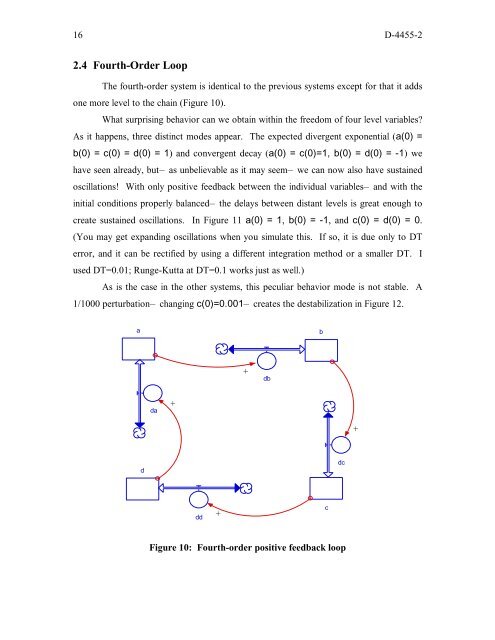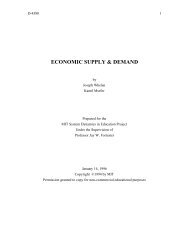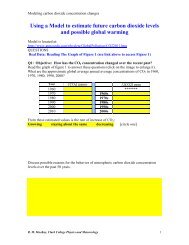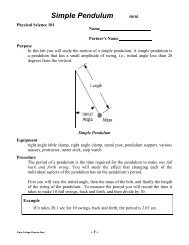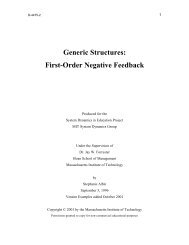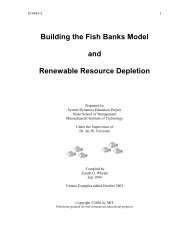Unexpected Behaviors in Higher- Order Positive Feedback Loops
Order Positive Feedback Loops - Creative Learning Exchange
Order Positive Feedback Loops - Creative Learning Exchange
- No tags were found...
Create successful ePaper yourself
Turn your PDF publications into a flip-book with our unique Google optimized e-Paper software.
16 D-4455-22.4 Fourth-<strong>Order</strong> LoopThe fourth-order system is identical to the previous systems except for that it addsone more level to the cha<strong>in</strong> (Figure 10).What surpris<strong>in</strong>g behavior can we obta<strong>in</strong> with<strong>in</strong> the freedom of four level variables?As it happens, three dist<strong>in</strong>ct modes appear. The expected divergent exponential (a(0) =b(0) = c(0) = d(0) = 1) and convergent decay (a(0) = c(0)=1, b(0) = d(0) = -1) wehave seen already, but— as unbelievable as it may seem— we can now also have susta<strong>in</strong>edoscillations! With only positive feedback between the <strong>in</strong>dividual variables— and with the<strong>in</strong>itial conditions properly balanced— the delays between distant levels is great enough tocreate susta<strong>in</strong>ed oscillations. In Figure 11 a(0) = 1, b(0) = -1, and c(0) = d(0) = 0.(You may get expand<strong>in</strong>g oscillations when you simulate this. If so, it is due only to DTerror, and it can be rectified by us<strong>in</strong>g a different <strong>in</strong>tegration method or a smaller DT. Iused DT=0.01; Runge-Kutta at DT=0.1 works just as well.)As is the case <strong>in</strong> the other systems, this peculiar behavior mode is not stable. A1/1000 perturbation— chang<strong>in</strong>g c(0)=0.001— creates the destabilization <strong>in</strong> Figure 12.ab+dbda++ddcdd+cFigure 10: Fourth-order positive feedback loop


